Created initially as a utility for the logging industry in the late 19th century, Shaver Lake today wears the crown of being one of the top fishing destinations in California. The lake’s pristine water hides an impressive array of fish species, making it a cherished location for seasoned anglers and a stimulating challenge for netting enthusiasts dwelling in this relaxing sport.
The environmental beauty of the lake, coupled with its status as a bountiful fishing ground, draws in a multitude of visitors every year. So whether you’re an experienced angler aiming for a rewarding challenge or an amateur hoping to reel in your first catch, Shaver Lake promises an unforgettable excursion that goes beyond the fishing experiences you’ve known so far.
Top Fish Species at Shaver Lake
One of the reasons Shaver Lake is such a popular fishing spot is its diversity of fish. Here are some of the species you can expect to catch in the lake:
1. Rainbow Trout
Rainbow Trout are the crowning jewels of Shaver Lake, populating its waters with their vibrant hues and playful personalities. Their abundance makes them the most targeted species for fishermen seeking a bountiful catch.
Diet and Behavior
Rainbow Trout feed primarily on smaller fish, insects, and crustaceans, revealing a lot about their behavior and preferred habitat. They tend to stay in deeper, colder parts of the lake during the day and come near the surface to feed in the early morning and evening.
Fishing Methods
To catch Rainbow Trout, trolling works exceptionally well and is often the most preferred method. Anglers usually use flashy artificial bait, spinning lures, or live bait like nightcrawlers to pull in these lively fish.
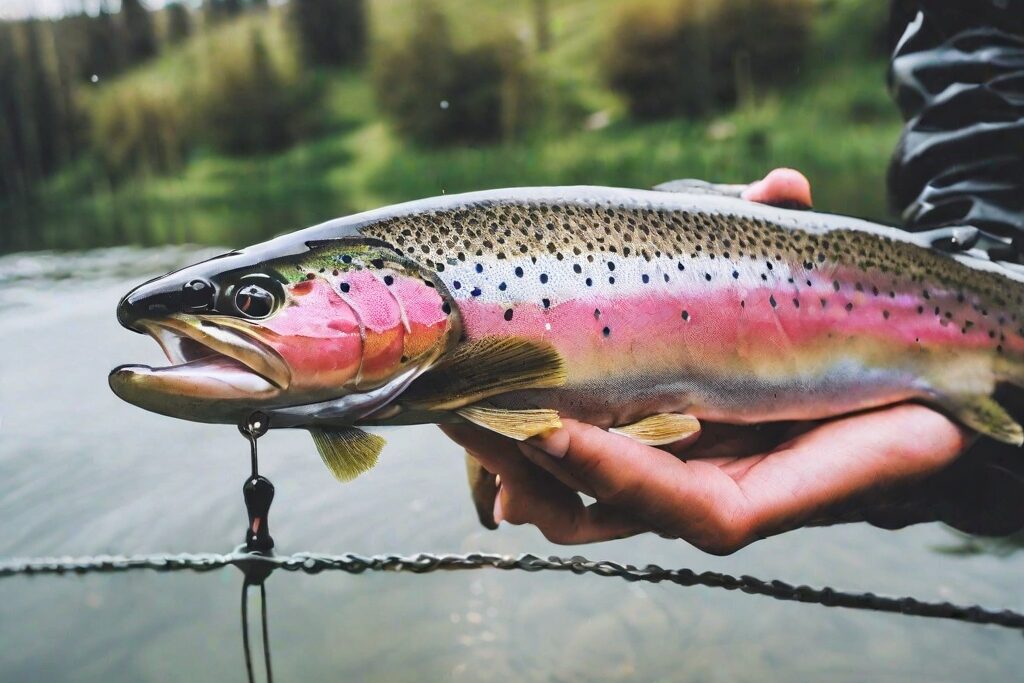
2. Brown Trout
Brown Trout is another significant species in Shaver Lake, renowned for both its cunning and its unwillingness to settle for anything less than the perfect bait.
Diet and Behavior
Brown Trout primarily feed on insects, smaller fish, and crustaceans. They are nocturnal feeders and tend to be more active during the cover of night or in the early morning and late evening hours.
Fishing Habitat
Their habitat preference includes deeper and cooler waters during the hot midday sun, retreating to the shallows when the temperature is more comfortable.
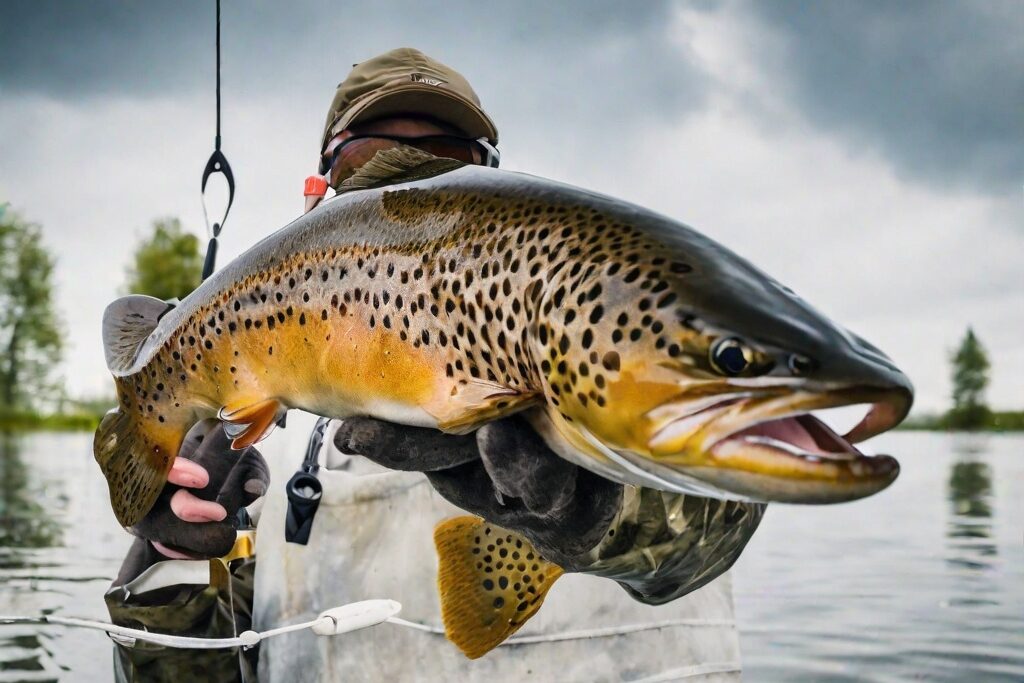
3. Brook Trout
The Brook Trout is one species of trout that any keen angler will enjoy pursuing. Shaver Lake offers a healthy population of these beautiful fish, which are known for their aggressive takes and intense fights.
Diet and Habitat
Brook Trout are primarily insectivores but won’t shy away from smaller fishes or crustaceans. They prefer cold, well-oxygenated upper reaches of streams and lakes like Shaver.
Best Lures
When it comes to fishing for Brook Trout in Shaver Lake, anglers often use a variety of lures and baits, including worms, spoons, spinners, and flies that mimic local insects.
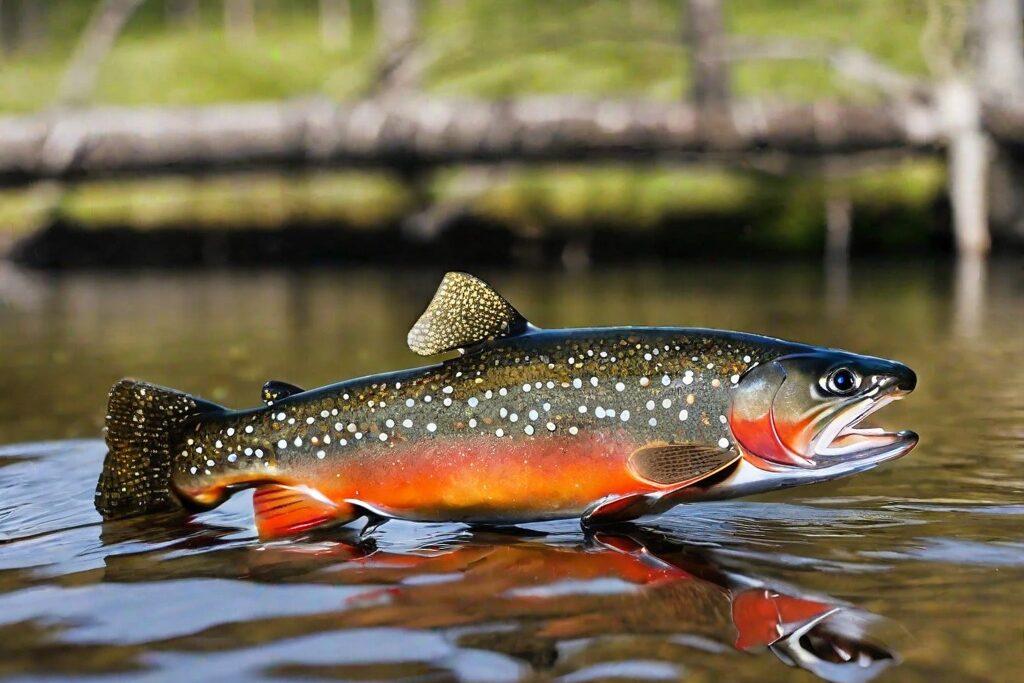
4. Smallmouth Bass
The Smallmouth Bass is an extremely resilient species that offers an exhilarating fishing experience at Shaver Lake, especially for those looking for a good fight.
Bass Characteristics
Smallmouth Bass are identified by their dark, vertical bands and their namesake, a smaller mouth compared to largemouth bass. Their bodies are streamlined for fast swimming, equipping them wonderfully for dramatic fishing battles.
Feeding Habits
These omnivorous fish have a varied diet ranging from smaller fish to insects, and crustaceans. They’re notorious for their aggressive strikes on virtually anything that moves.
Bass Fishing Tips
Their opportunistic feeding habits make them less fussy about baits, and they can be lured successfully with live bait, jigs, spinners, and soft plastic lures, among others.
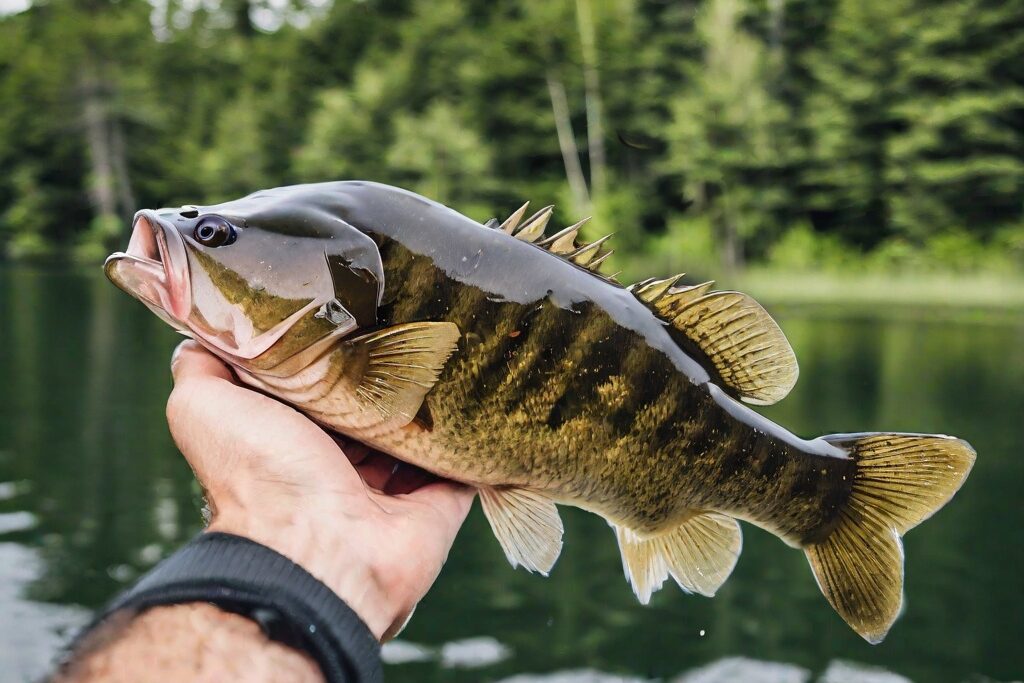
5. Catfish
If you pick any warm, calm evening at Shaver Lake, you’re likely to find at least a few individuals anchored near the bottom, fishing for catfish. These nocturnal creatures tend to stir up quite the excitement with their stubborn fights.
Types of Catfish
Channel catfish are the most common in Shaver Lake, identified by their deeply forked tails and sharp, venomous spines on their dorsal and pectoral fins.
Catfish Habitat
Channel catfish favor deep, slowly moving water and are often found in the deepest parts of the lake during the day.
Tips for Catching Catfish
From stink baits to cut baits, the choices when fishing for catfish are plentiful. However, nightcrawlers or chicken livers are often the most successful enticements.
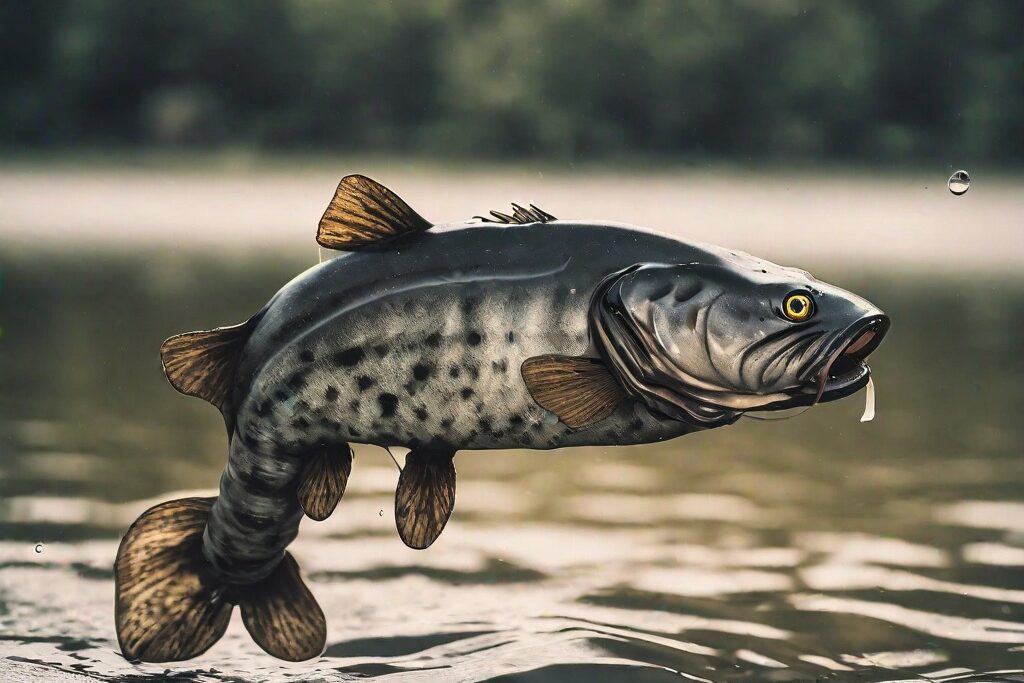
Best Fishing Locations at Shaver Lake
Whether you’re a beginner or an experienced angler, there are plenty of great fishing locations to explore at Shaver Lake. Here are some of the best spots to check out:
1. Stevenson Bay
Stevenson Bay is a popular fishing location at Shaver Lake, known for its excellent trout fishing. This bay is located on the south side of the lake and is easily accessible by car or boat. Anglers can catch rainbow, brown, and brook trout here using a variety of fishing techniques, including bait, lures, and flies.
2. Black Rock
Black Rock is another great fishing location at Shaver Lake, located on the north shore of the lake. This area is known for its deep water and rocky shoreline, making it ideal for catching large lake trout. Anglers can also catch brown and rainbow trout here using a variety of techniques, including trolling, jigging, and casting.
3. Dorabelle Cove
Dorabelle Cove is a quieter fishing location at Shaver Lake, located on the lake’s northeast side. This area is known for its calm waters and excellent trout fishing. Anglers can catch rainbow and brown trout here using bait, lures, and flies. This spot is ideal for those who prefer a more secluded fishing experience.
4. Island Bay
Island Bay is a popular fishing location on the east side of the lake, known for its excellent kokanee salmon fishing. Anglers can catch kokanee salmon here using trolling techniques and small lures. This spot is also a great location for catching rainbow and brown trout.
5. South Fork of the San Joaquin River
The South Fork of the San Joaquin River is a popular fishing location near Shaver Lake, known for its excellent wild trout fishing. This river is easily accessible from several hiking trails in the area, and anglers can catch rainbow and brown trout using a variety of techniques, including fly fishing.
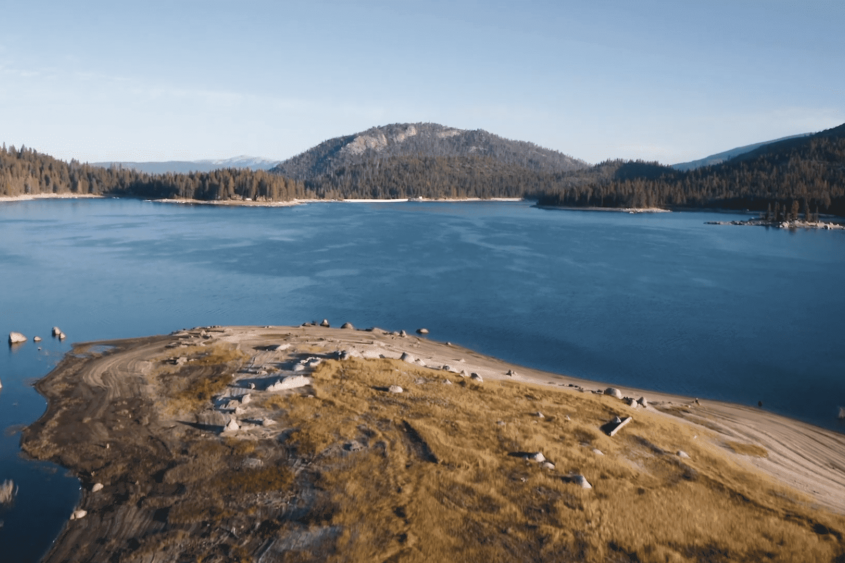
Best Time for Fishing at Shaver Lake
Shaver Lake is a popular fishing destination in California, with various fish species available throughout the year. However, the best time for fishing at Shaver Lake depends on several factors, including the season, weather conditions, and the type of fish you’re targeting. In this article, we’ll take a closer look at the best times for fishing at Shaver Lake.
Spring
Spring is a great time to go fishing at Shaver Lake, particularly for trout. As the ice melts and the water begins to warm up, trout become more active and start feeding on insects and other small prey. Anglers can use a variety of techniques, including bait, lures, and flies, to catch rainbow, brown, and brook trout during this time.
Summer
Summer is a popular time to visit Shaver Lake, but it can also be challenging for fishing. As the water temperatures rise, many fish species become less active and retreat to deeper, cooler waters. However, anglers can still catch trout and other fish species during the early morning and late evening hours when the water is cooler.
Fall
Fall is another great time to go fishing at Shaver Lake, particularly for kokanee salmon. As the water cools down and the days get shorter, kokanee salmon become more active and start moving toward the lake’s shallow areas. Anglers can use trolling techniques and small lures to catch these fish, which are known for their tasty meat.
Winter
Winter can be challenging for fishing at Shaver Lake, as the lake often freezes over, and many fish species become less active. However, ice fishing can be a fun and exciting way to catch trout and other fish species during this time. Anglers can use a variety of techniques, including jigs and tip-ups, to catch fish through the ice.
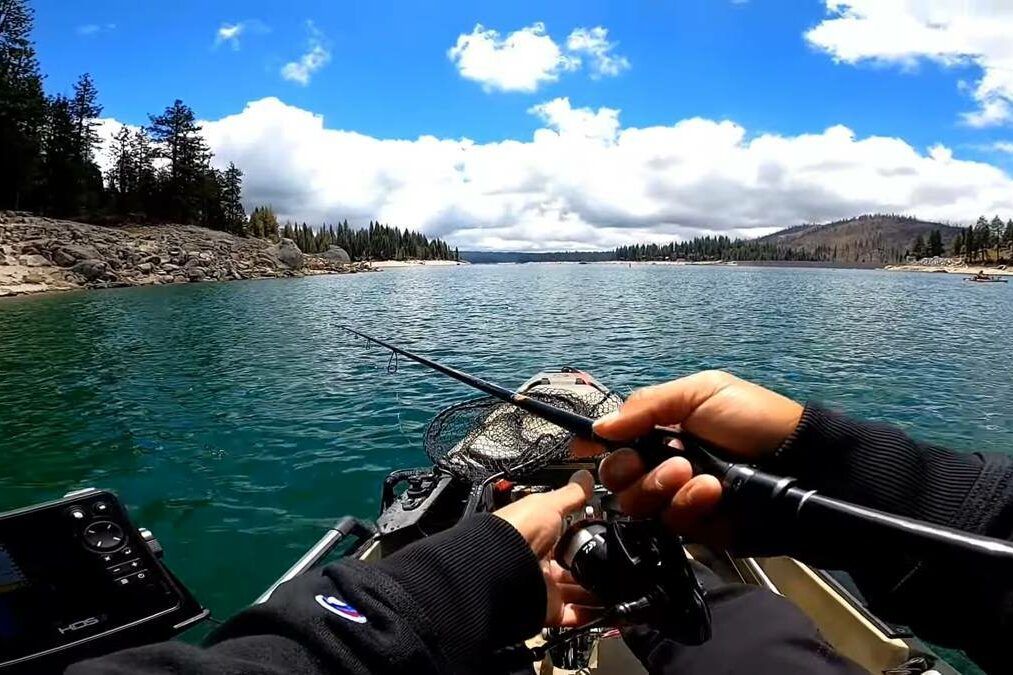
Fishing regulations at Shaver Lake, CA
Fishing regulations at Shaver Lake are in place to ensure the sustainability of fish populations and maintain a healthy ecosystem. It is important for anglers to be aware of these regulations and follow them to avoid fines and penalties. In this article, we’ll go over the fishing regulations at Shaver Lake.
Fishing License
All anglers over the age of 16 must have a valid California fishing license to fish at Shaver Lake. Licenses can be purchased online or at local sporting goods stores. Anglers should carry their license with them while fishing and be prepared to show it to a California Department of Fish and Wildlife officer upon request.
Bag and Size Limits
Bag and size limits are in place for most fish species at Shaver Lake. The bag limit is the number of fish an angler is allowed to keep in a single day, while the size limit refers to the minimum and/or maximum size of a fish that can be legally kept. It is important for anglers to know and follow these limits to avoid fines and penalties.
The bag and size limits for some common fish species at Shaver Lake are as follows:
- Trout: Bag limit of 5 fish per day, with a minimum size limit of 10 inches
- Kokanee salmon: Bag limit of 10 fish per day, with no size limit
- Bass: Bag limit of 5 fish per day, with a minimum size limit of 12 inches
- Catfish: Bag limit of 10 fish per day, with no size limit
Fishing Methods and Gear
Certain fishing methods and gear are prohibited at Shaver Lake to protect fish populations and maintain the quality of the lake’s ecosystem. Some regulations on fishing methods and gear at Shaver Lake include:
- No snagging, netting, or spearing of fish is allowed
- Only one fishing line with a maximum of three hooks may be used at a time
- The use of lead sinkers and jigs weighing less than one ounce is prohibited
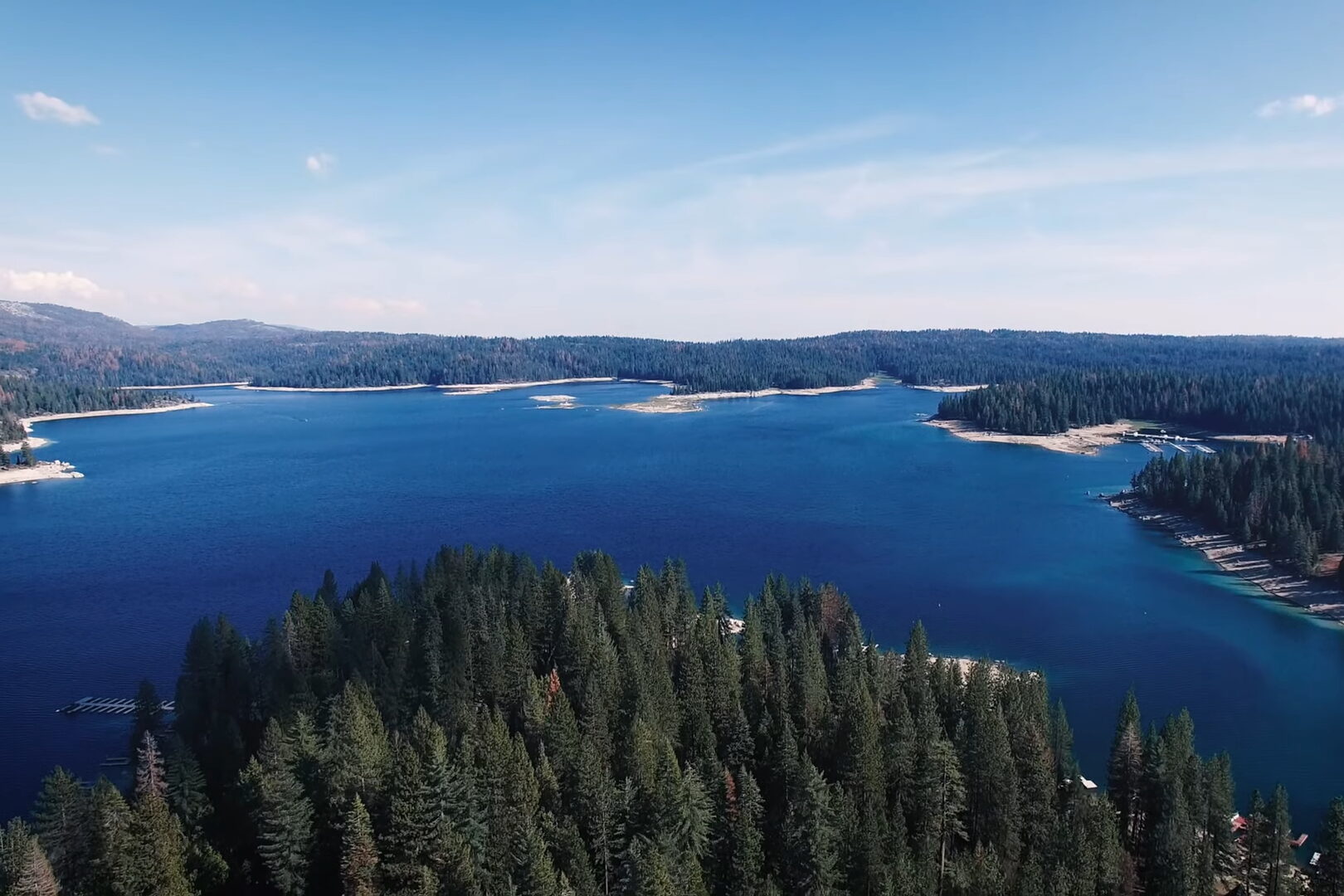
FAQs
Which Baits and Lures Are Catching Fish at Shaver Lake?

Shaver Lake in California is a popular fishing spot that offers a variety of species to target. Some of the popular baits and lures used include PowerBait, nightcrawlers, Kastmaster and Rapala lures, and Rooster Tail spinners. However, the effectiveness of these baits and lures can vary depending on the time of year, weather conditions, and the species you are targeting. It’s always a good idea to research local fishing reports and talk to local bait and tackle shops for the most up-to-date information on what’s working at Shaver Lake.
How do you rig up for kokanee fishing?
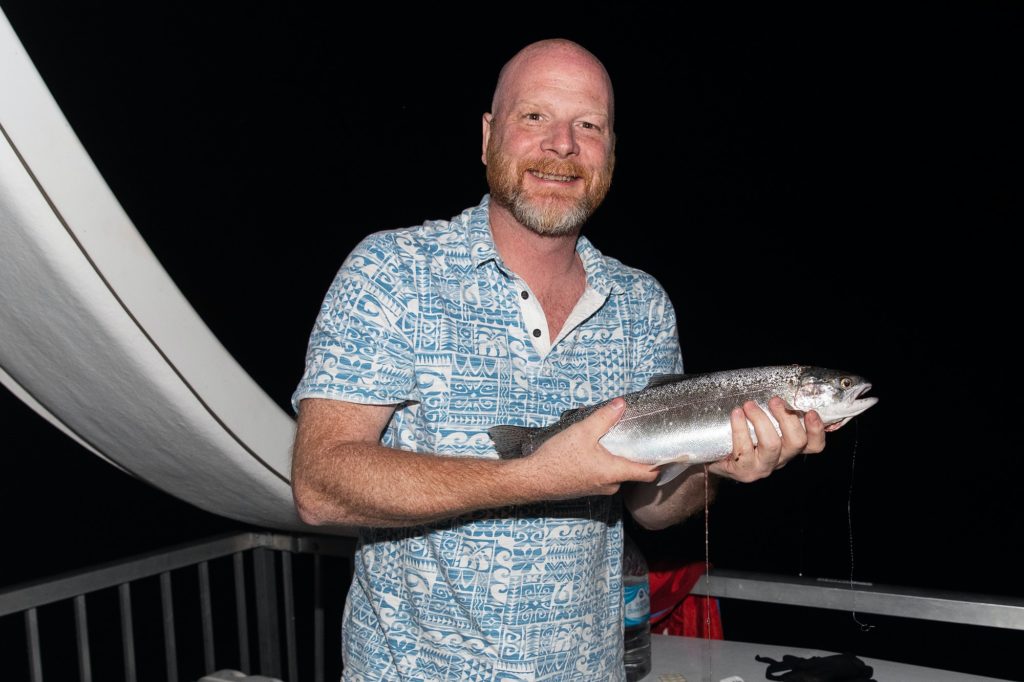
When fishing for kokanee salmon, it is vital to rig up properly. The following are the steps you need to take:
1) First, attach a weight about 18 inches from the hook. This will help keep your bait in the desired spot.
2) Next, tie on a leader that is about 3 feet long.
3) Attach a spinner blade or dodger to the leader.
4) Finally, add a spoon or spin-n-Glo as your bait.
This setup should help you catch plenty of kokanee salmon!
How do you target Kokanee?
Kokanee fishing requires specific techniques and gear. To target Kokanee, you will need to use a lightweight spinning rod and reel with a 4-6-pound test line. Use a dodger or flasher to attract the fish and tie on a small hoochie, spinner, or spoon lure in bright colors like pink, orange, or red. Trolling is the most common method for Kokanee fishing, and it’s important to keep your lure at the right depth (usually around 20-30 feet) and at a slow speed. Pay attention to the time of day, weather conditions, and water temperature to increase your chances of success.

